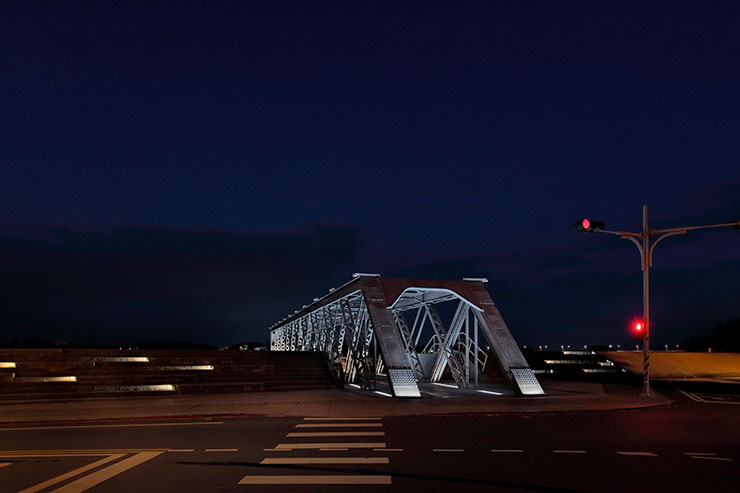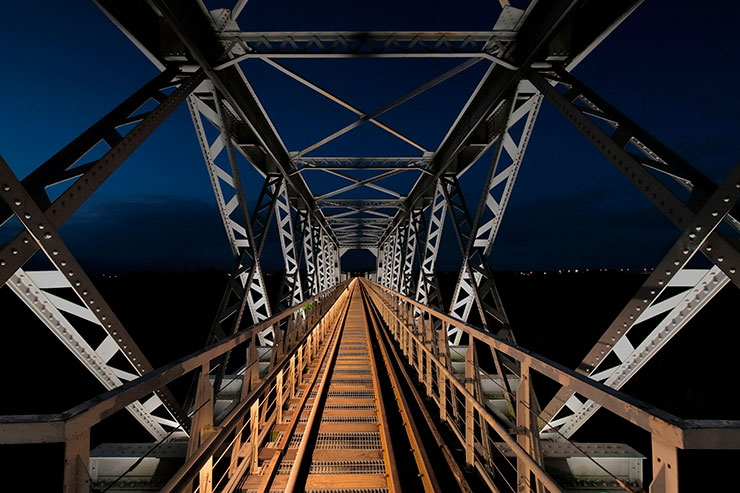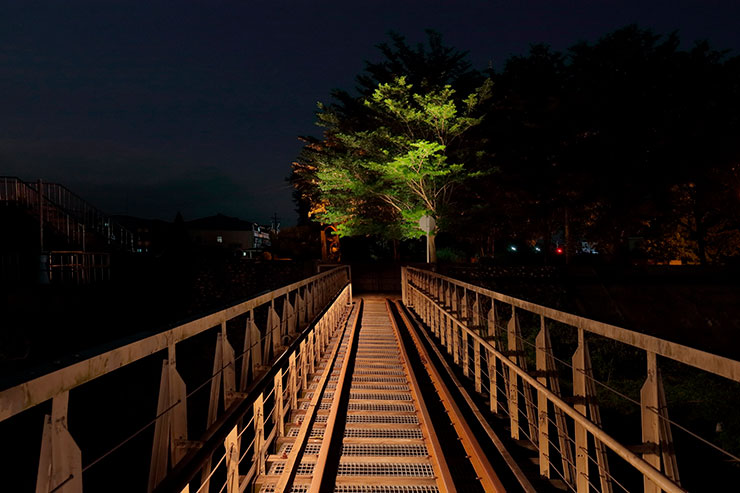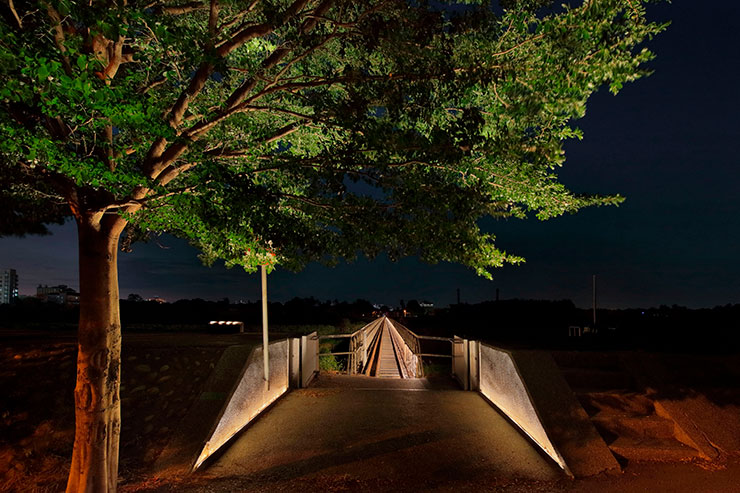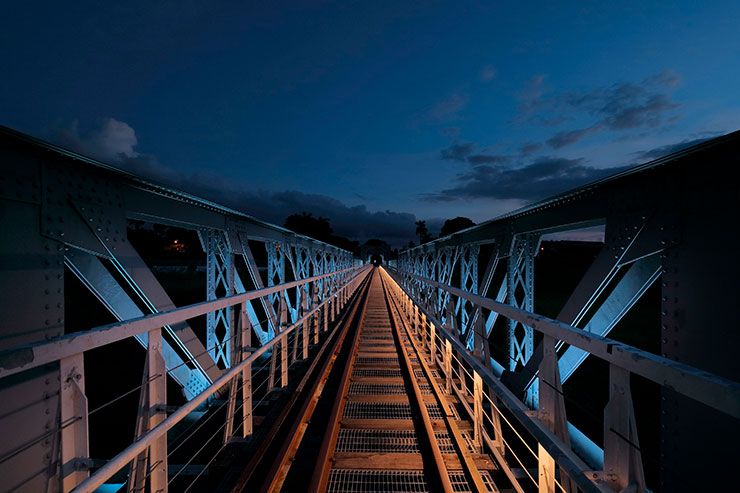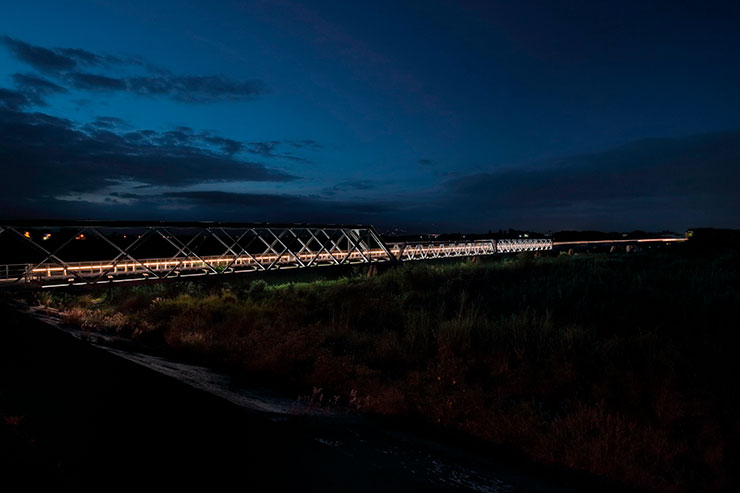- ABOUT
- JUDGING
- CONTACT
- MORE
- 2024 Entries
- Installations 2024
- Past Winners
- Subscribe
- [d]arc directory
- arc magazine
- darc magazine
Huwei Iron Bridge, Taiwan
ProjectHuwei Iron BridgeLocationYunlin County, TaiwanLighting DesignCosmoC Lighting Design, TaiwanAdditional DesignLin, Ching-Yu (Lead Designer) Huang Kuo Chan, Huang Jie Yu, Huang Chun Yen, Lee Hui Ning, Niu Yu PeiClientYunlin County GovernmentLighting SuppliersFomoluxPhotographyLiu, Sen Yung
The century-old Huwei Iron Bridge, a historic site designated by Yunlin County, used to be a railway track exclusive to the sugar industry. Huwei, Yunlin, a sugar manufacturing stronghold in the 1950s and 1960s when Taiwan’s sugar industry was in its prime, had the bridge constructed for “Wufen narrow-gauge train” during the Japanese rule to transport large quantities of sugarcanes into the factory. After several extensions and changes, the scene of the mini-train crossing the iron bridge is long gone. Visitors, however, can now hang out or roam freely on the track, and Huwei Iron Bridge is now an iconic local tourist attraction.
Huwei Iron Bridge spans the massive Huwei River, with 21 piers and a total length of 437 meters. Steel-structured, the bridge consists of four composite segments. Above one end is an elevated steel structure that stretches for around 200 metres, while on the other end are only a train track and a horizontal bridge structure installed in accordance with varied spans of the river terrain. Thus the entire bridge forms an asymmetrical terrace structure.
The illumination environment design of Huwei Iron Bridge, a nexus of horizontal space and vertical time that work like the bridge’s trusses and beams, serves to interlace nocturnal scenes in an active way. The moving lights simulate a train crossing the bridge, and, with lighting installations on the bridge at specific intervals, present the gradual progression of light, reminiscent of a train going through the tunnel of time and approaching slowly from afar.
In addition, the colors of lights are themed on the 24 solar terms of the four seasons. The six spring solar terms features pink light that resembles romantic cherry blossoms in spring. In summer, azure blue symbolizes sea water and a clear sky. Saffron yellow in autumn is representative of falling maple leaves, while chilly white light is used for the six winter solar terms, suggestive of silver white frost and snow. The different scenes serve to accentuate how beautiful this historic site is during seasonal transitions.
Apart from the 24 solar terms, 4000K cold white light delineate the bridge’s trusses and beams, especially the elevated side, highlighting the intertwining of the openwork steel parts. On the sidewalk, 3000K warm light is applied to accent the bridge’s trusses, giving a feel of walking in a time corridor of light. The lights that connect the entire bridge are concealed below the sidewalk handrails and among the bridge structure, thoughtfully providing indirect lighting for sufficient illumination in the nighttime. In so doing, dazzling glare of direct light is avoided, and the safety of pedestrians walking on the bridge is ensured as well. On the other side of the bridge, specific lighting is installed to highlight the contour of a tree by the road, which becomes a statement piece at the end of the tour.
This project, in an attempt to meet the requirements of Yunlin County government based on the United Nations SDGs sustainable development, constructs an illumination environment in harmony with local natural scenery to develop a sustainable town. Its unique lighting environment will create a more prominent landmark whose new look not merely makes Huwei Iron Bridge’s view in the nighttime a local highlight steeped in history, but revitalizes the historic site and promotes a sustainable local tourism industry.

